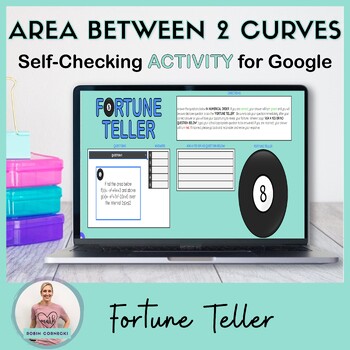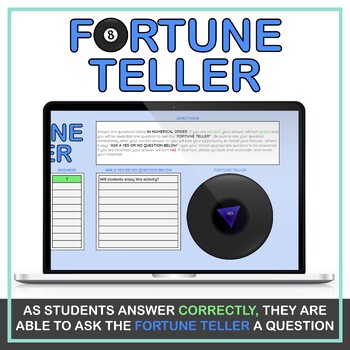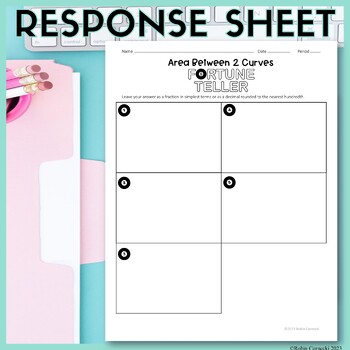Area Between Two Curves Digital|Printable Activity for Calculus
- PDF
- Google Apps™
- Internet Activities

Description
Area Between Two Curves is a fun and engaging Self-Checking Digital and Printable Fortune Teller activity for your Calculus students to review and practice area between two curves in their integrals unit. There are 5 questions that students will answer by finding the area between two curves.
➡️The questions are a task card so the students will only see 1 question at a time.
✅This resource is perfect for your favorite LMS (zero prep) or in the classroom. There is a worksheet and printable task cards that you can use for students to keep track of their answers or give to students who need a paper copy of materials.
✨In this self-checking activity, students answer content-specific questions. If correct, students are rewarded with a quick silly activity. After a correct response, students are able to ask the fortune teller a yes or no question. Each question students ask triggers a random response. What random questions will you students finally get answered?
✨For this activity to work properly, students must answer the question in order. After solving the question on a whiteboard, scratch paper, or the provided workspace, students type their final answer into the appropriate cell. If correct, the student receives immediate feedback as the cell turns green and they are able to ask a question.
In contrast, when students answer incorrectly, their answer turns red to let them know they should go back and revise their answer or seek help from the instructor.
✨You must have a free Google account to access the document.
When you purchase, you will receive a PDF containing the link to this file, a printable worksheet, teacher instructions, and an answer key.
✅This activity is self-checking and 0 prep!
✅ The preview video is for demonstration purposes only.
I hope your students love this as much as mine did. It is much less intimidating than a worksheet and kept my students motivated the entire class period!
You may also like:
Related Products
⭐ Chain Rule for Derivatives Activity
⭐ Evaluate Definite Integrals Digital Mystery Picture
⭐ Evaluate Indefinite Integrals Activity
⭐ Integration by U Substitution Calculus Coloring Activity
Don't forget to leave a review to earn credit toward future resources at no extra cost to you!
Let's be social!





